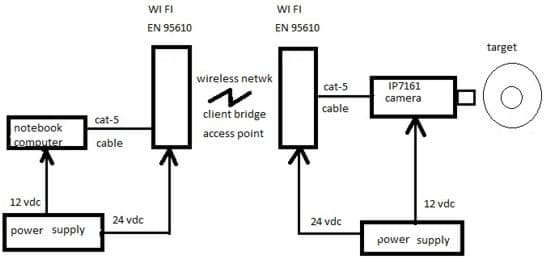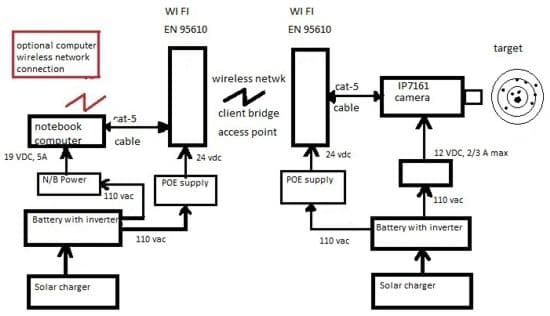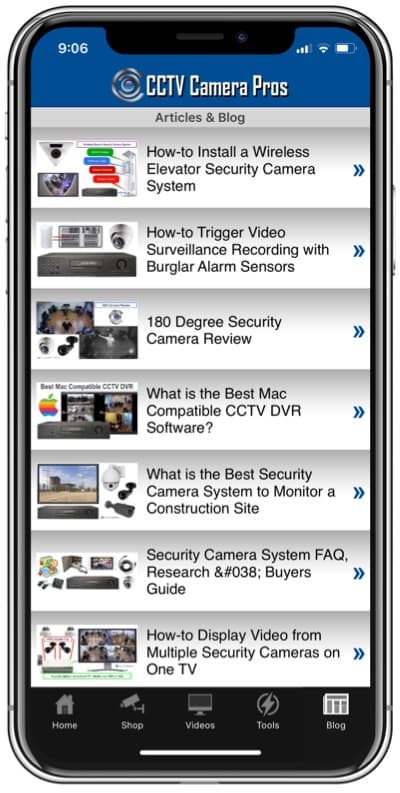Wireless Security Camera System Questions
Home > CCTV Security Camera & Video Surveillance System Forums > Wireless Security Cameras & Systems > Wireless Security Camera System Questions
- This topic is empty.
-
AuthorPosts
-
December 18, 2009 at 6:30 pm #31024December 19, 2009 at 1:07 pm #31927
Mike Haldas
KeymasterFollow up questions from gun range owner:
We are in a remote area with no power. I was planning to power the antennas, camera, network switch and notebook computer with rechargeable batteries and solar chargers. What do you think?
CCTV Camera Pros reply:
It is certainly possible to power both the camera and wireless camera system with solar or battery power, but I am sorry that I can not offer any expertise in that area. We have some installers that we are partnered with that have deployed applications like this, but we do not get involved in that piece at this time.
Please let me know if I can help with anything else
December 19, 2009 at 1:12 pm #31928Mike Haldas
KeymasterFollow up from gun range owner:
Thank you for your assistance. I know this is a unique application and I want to get it right before making a purchase.
The way I see it is as follows:
The camera connects to one of the antennas via a cat-5 cable. Power input for the camera is 12 vdc and 24 vdc for the antenna.
On the other end the notebook computer connects to the other antenna via another cat-5 cable. Power requirements are 12 vdc for the notebook and 24 vdc for the antenna.
I will take care of the power requirements.
Do these connections sound correct to you?
Refer to sketch below. Are the connections correct?
Don�t worry about the power supplies. I�ll take care of the power requirements.

CCTV Camera Pros reply:
Nice job on the diagram. Yes, you are correct. Let me just add a few details. The the wireless transmitters include a POE power supply. It it is basically a very small box (about 2 inches long) that has three connections. 1) A power input which gets connected to the AC power supply included with the unit (the power supply is basically about the same size as a cell phone battery charger and connects to a standard 110 power source). 2) An RJ-45 / Cat5 POE out which connects to the antenna to provide its power and connectivity 3) An RJ-45 / Cat5 Ethernet input to connect to the camera. So again, your diagram is correct, but I just want to make sure you understand the details of how the power and connectivity is being delivered to the wireless antennas.
Also, on the bridge side, typically there is a network switch that both the laptop and the access point antenna connect to, instead of connecting the antenna directly to the laptop, but for your application, I think the direct connection will be fine. If you ever want other device to see the camera on a network, you can add a network switch at any time.
Last, I want to mention that CCTV Camera Pros offers a service where we can pre-configure the wireless bridge and camera for you so that when you get the equipment everything will connect for you when you power it up. As part of this service, we also make sure that all IP devices have been updated to the latest firmware version. The cost for this is $20 per device, so $60 total for this application in case you are interested in that.
Please let me know if you have any further questions and have a great weekend.
December 20, 2009 at 12:55 pm #31929Mike Haldas
KeymasterFollow up questions & comments form the gun range owner:
The sketch is kind of crude because I used MS Paint and I�m no artist but it gets the job done J and I have made some corrections to the sketch.
The shooting range is in a remote location. It is accessible using a dirt road. There is no 110 VAC power available. It�s out in the woods. J
Since I don�t have a 110 VAC power source available at our location, I will use a battery and an inverter to provide the 110 VAC. I can then use the POE and plug my notebook computer in using the standard power supply.
My laptop has wireless network capability built in but for this application I won�t need to connect to anything else. I could connect with the wireless connection if you think it would be better.
The camera has ePTZ. I am not familiar with that. I assume it simulates the camera connected to a mount that moves. Is the ePTZ function controllable through the network connection and how much movement is there? The target is 36 in x 36 in. and I need to scan and focus in on a specific area of that surface.
Reply from CCTV Camera Pros:
I would definitely recommend connecting to the laptop wired, and not wireless to the bridge antenna. In regards to the ePTZ function of the IP camera, it stands for electronic pan tilt zoom. The camera does not actually move, but instead allows you to digitally zoom in to different part of the video focus area. This camera is able to support that because it is a megapixel camera and supports high resolution. So, for example if you have the camera focused on the width and height of the target and you need to zoom in a bit more on a specific part of the target to confirm it was in fact hit, you will be able to do that using the ePTZ function.
Please let me know if you have any other questions. It is great that you are doing all of this thorough research upfront to make sure you get exactly what you are need. It is no problem if you have more questions. We prefer to answer as much as possible upfront rather than have you get something that does not fit your requirements.
December 21, 2009 at 12:32 pm #31930Mike Haldas
KeymasterFollow up questions from gun range owner:
Mike,
I have one additional question. The target area is 36 in. x 36 in. There are multiple targets in that area as shown in the attached photo (taken with a HP Photosmart M22). Will I be able to zoom in and see each of the targets close enough to observe the bullet holes? If the IP-V97161 megapixel camera will give me an image like the attached photo it should work just fine.
Below is my latest updated diagram that shows how the wireless camera system and solar power will layout.

I have researched batteries, inverters and solar chargers. I know this is not your area of expertise but I thought you might be interested. I plan to build two boxes like small suitcases containing the battery inverter and solar charger. One will supply the notebook and one antenna, the other will supply the camera and other antenna. I still have to calculate the power requirements before I make any selections.
Inverters
https://www.theinverterstore.com/?gclid=CNiF9aeO5J4CFRHyDAodl18RMg
Solar Panels
https://www.batterystuff.com/solar-chargers/
https://www.siliconsolar.com/visual-directory/solar-battery-chargers.html
Batteries
Reply from CCTV Camera Pros:
Thank You for the links to those solar power, battery, and power inverter resources. We are going to document them on our support forum to share with other people looking to do similar solar and battery powered security camera projects. Below is a link to the image that you took resized to exactly 1600 x 1200 pixels which is 2 megapixel.
Two Megapixel IP Camera Image
https://videos.cctvcamerapros.com/images/wireless/2-megapixel-IP-Camera-image.jpg
That is the size of the video and images that the camera is capable of capturing. However, one thing to consider is the total size of those targets. Can you please give me the exact size, width and height of the total area? We can then calculate what lens will work best for your application and at what distance you need to mount the camera. I have a feeling that you may need to mount the camera farther back from the gun targets than you first wanted. Also, is the gun range indoors or outdoors? If it is outdoors and the camera will be left outdoors, then you will also need to purchase an outdoor housing for the camera like any of these:
https://www.cctvcamerapros.com/CCTV-Camera-Housing-p/hpro-605.htm
https://www.cctvcamerapros.com/CCTV-Camera-Housing-p/hbpro-601hb.htm
https://www.cctvcamerapros.com/Arecont-Vision-Camera-Housing-p/hsg1-o-w.htm
Please let me know the dimensions of the entire target area.
December 21, 2009 at 5:03 pm #31931Mike Haldas
KeymasterReply from customer:
In the photo the total area that the individual targets are placed on is 36 inches x 36 inches. The individual targets that I staple to the surface vary in size and shape ( 8 inches to 12 inches in diameter) and are typically as shown in the photo.
The placement of the camera will be in front of and below the target. The minimum distance from the target has to be 8 feet to 10 feet but this distance can be increased as required.
The range is outdoors but the camera and equipment will be setup for the shooting session and put away when finished. Nothing will be left outside. This will be a portable system.
The re-sized photo looks great.
Response from CCTV Camera Pros:
I setup a test environment where I placed a 5 megapixel camera 10 feet away from an area about 3.5 feet wide. Please look at the attached pictures. I used the 5 megapixel camera and took still shots at 2 megapixels and 5 megapixel resolution. I took one shot with a simulated target with bullet holes using a standard 8.5 x 11 printer paper. I also took another shot without the target so you can see the clarity with text on the product box I used.
Click on the below link to see the 2 megapixel and 5 megapixel camera images:
https://videos.cctvcamerapros.com/images/megapixel-cameras/5-megapixel-security-camera-image.jpg
https://videos.cctvcamerapros.com/images/megapixel-cameras/2-megapixel-security-camera-image.jpg
I did not have a IP-V97161 out of the box to test with so I used the following 5 megapixel camera with a 4.5 to 13mm varifocal lens:
https://www.cctvcamerapros.com/5-Mega-pixel-Security-Camera-p/ip-av95105dn.htm
This is our top of the line megapixel camera so the image looks pretty amazing. I did compress the images before I emailed them so the quality is degraded slightly.
Please let me know what you think and if you have any other questions.
October 20, 2010 at 8:15 pm #31932Anonymous
InactiveMike,
I found this topic via Google. Similar situation at a private shooting range I manage. I am interested in a system allowing 3 cameras to operate and transmit (no power source so solar/batteries/12v/converter system of some sort) from different locations at 550, 700, and 1,075 yards with good line of sight. On the receiver end I do have 120v AC power, and probably a laptop that could be dedicated for display use. I could reduce the scope to a 2 camera system if costs jump significantly going from 2 to 3 cameras.
This is an occasional use range, so I would be interested in comparing the super economy version to the good but maybe not MilSpec version.
thanks, John
-
AuthorPosts
- You must be logged in to reply to this topic.







